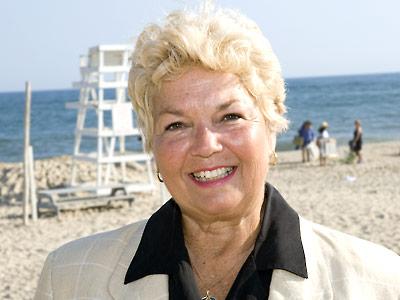Town Votes To Pull Out Of Poxabogue
Town Votes To Pull Out Of Poxabogue

A majority of the town board voted last Thursday to sell East Hampton’s 50-percent share of the Poxabogue Golf Center to Southampton Town, the joint owner.
According to the terms of the sale, East Hampton will sell its half-share of the site, for which it paid $3.25 million in 2004, to Southampton for $2.2 million.
The vote came toward the end of a meeting during which two speakers asked the board not to proceed with the sale until it could be more fully discussed and public opinion weighed.
Jordy Mark, a member and former co-chairwoman of the Wainscott Citizens Advisory Committee, which was involved in the initial discussions of and supported the golf center’s purchase, told the board that Poxabogue is “an incredible asset in our community, because it is used by every age group, every economic level. It is a real community facility.”
“I think the community deserves to participate” in the decision as to its future, Ms. Mark, an employee of The Star, said.
A proposal to develop the land housing the driving range and golf course into residential lots prompted a public outcry to save the facility, and the course was bought for $6.5 million, with each town paying half.
Although the Sagaponack site is within Southampton Town, Poxabogue’s popularity with East Hampton residents and its proximity to the town border were the basis for East Hampton’s partnership with the neighboring town.
Southampton used its community preservation fund, while East Hampton issued an 18-year bond to raise the money.
“I am told it was one of the most enthusiastically supported purchases,” Ms. Mark said last Thursday. “The way it functions now serves the community.”
“I’m not a golfer,” she said. “I really speak to this as a member of the community who sees a facility that is so loved and so well used.”
“Southampton’s going to buy it with [the community preservation fund], and so it’s going to stay as it is,” Supervisor Bill Wilkinson told her.
Zachary Cohen, a Democratic candidate for supervisor, questioned whether the sale had been adequately analyzed. “I don’t really feel the board is prepared tonight to vote on Poxabogue.” For instance, he said that the “quantifiable benefit” to the community, such as the value to East Hampton residents of a discounted rate for golf games, should be considered.
In addition, he questioned the fiscal wisdom of the sale, pointing out that even after it no longer owns the facility, East Hampton will have to pay interest on money borrowed for the purchase for the next four years, until the debt can legally be retired.
Before the vote last Thursday, Councilwoman Julia Prince recommended that the board table the matter and invite the public to weigh in. She reminded Mr. Wilkinson of comments he had made earlier in the meeting. “Everybody on the board is in favor of selling the asset,” she said. “However, as Bill said earlier, we do learn a lot from public hearings.” She abstained from the vote on the sale resolution, which passed with four yes votes.
This week, Mr. Cohen and his running mates for town board issued a statement calling the sale a “tax trick” by the supervisor, allowing him to lower taxes next year by eliminating the payment of principal on the debt, although the interest payments must remain in the budget.
“Once again, in his desire to keep our property tax rate low for the upcoming year, Supervisor Wilkinson is loading us taxpayers with higher and unavoidable taxes further down the road. Is this an election-year gimmick? At the very least, it is imprudent finance,” the release said.
But according to Len Bernard, the town budget officer, “This is beyond a no-brainer. You don’t lose anything by selling it.”
The town will save in the long run, he said, and according to his figures the $1.7 million remaining from the sale proceeds after making debt principal payments from it for the next four years will not only cover the payoff on the bond but also leave $38,000 to spare.
“I find it odd that people would poke holes in something that will save the town about $2.5 to $2.6 million in taxes over the next 12 years,” Mr. Bernard said Tuesday.
“There are a lot of unanswered questions,” Ms. Mark told the board last week. “I think that you’re selling us all short if you think that this is ready for a vote. All of the issues deserve a public hearing.” She submitted a letter with similar sentiments written by Sam Kramer, also a former Wainscott Citizens Advisory Committee co-chairman and currently a Democratic candidate for town trustee.
Ms. Mark reminded Mr. Wilkinson of a conversation some time ago in which she had told him about her concern over rumors of a possible Poxabogue sale. He assured her, Ms. Mark said, that the rumors were untrue.
“Even if the end result is to sell it, I still think the members of the community deserve to discuss, and deserve to be convinced,” she said.
“We do public hearings when we’re obliged to do public hearings,” the supervisor said.
According to Mr. Bernard, the remaining debt on the property would total approximately $2.4 million, in principal and interest, by the end of the bond period, in 2023.
Proceeds of the sale to Southampton, plus some $200,000 that is expected — East Hampton’s half of a capital reserve fund into which the profits from Poxabogue have been placed — would be set aside in an interest-bearing reserve fund for paying off the bond debt.
By selling its share right now, Mr. Bernard said, and paying off the entirety of the remaining debt in four years — the earliest, by law, that the bond can be paid off — the town will save some $288,000 in interest. In addition, after that the principal payments that would have been made until 2023 can be eliminated from annual budgets, he said. Principal payments of about $180,000 per year can be made from the sale proceeds for the next four years.
But the town will still have to pay annual interest payments of about $82,500 for each of the next four years until then, money that will have to be included in annual budgets and raised through taxes. Federal and state law allows the town to use the sale proceeds that have been set aside only to pay off the bond principal, and not the interest, Mr. Bernard said Tuesday.
Mr. Cohen said last week that it doesn’t make sense to have to continue making interest payments on a loan for a property the town doesn’t own.
In the political press release, which was titled “Supervisor Wilkinson Shows Rash Judgment in Uninformed Decision to Sell ‘Poxy,’ ” he said that according to his calculations, the sale price “will not even be sufficient to pay off the debt that is still owed.”
“By 2016, the town will have paid out $2.2 million in principal, interest, and fees, and will have no ownership of anything to show for all that taxpayer money. All the townspeople will have are memories of having once partnered with Southampton in ownership of this beloved local institution, known to locals as ‘Poxy,’ ” the release said.
Items such as the number of rounds of golf played annually by East Hampton residents and the total savings on discounted greens fees, the value of income from the facility and capital improvements made, as well as projected income, should be considered, according to the candidates’ statement. The property, they asserted, could provide “substantial income” in the future, after it is paid off.
“Why would we sell an income-producing asset that also provides benefits of use to the residents without having first looked at other less productive and less popular assets?” the candidates asked. In their view, according to the release, the decision on Poxabogue “demonstrates the same lack of research and insight” shown in other proposed property sales — of the commercial fishing docks in Montauk and that hamlet’s Fort Pond House.
Mr. Wilkinson had publicly advocated selling the docks, but then backed off in the face of opposition by fishermen, saying the docks were merely one of a number of properties included in a list prepared by the Planning Department. The Fort Pond House was placed on the market, but the sale has been challenged in a lawsuit.
The Democrats cited the original resolution approving the towns’ joint purchase of the golf center, which concluded that there was a need for public golf facilities. They said that that situation has not changed. They also said that with Southampton as sole owner, the style of the course could be drastically changed, or use of the site could be changed to a different type of park.
Last week, both Ms. Mark and Mr. Cohen questioned whether the contract of sale included a provision ensuring a discount for East Hampton residents. Mr. Bernard said this week that the topic had been broached with Southampton officials and that they were amenable to such a codicil.




